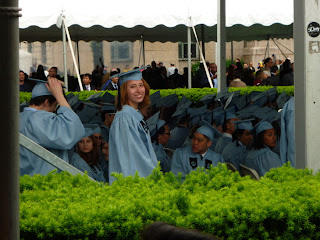Last night I had a wonderful
White Street Studio Walk experience, seeing many wonderful old friends, meeting some new ones, meeting for the first time, people who have had my work in their small collections for many years. And I sold a bit of work to dear friends. This morning, I will spend a bit of time as docent at an exhibit of local art work at the
Queen Anne Mansion in Eureka Springs, then return to work in my own wood shop. After being away for a few days, it is always refreshing to be creatively engaged.
Richard Alpert, A.K.A. Ram Dass was an early leader in bringing an interest in Eastern Religions to the US in the 1970's. His book
Be Here Now, 1971 was a long time best seller in the hippy generation, and remains in print today. My wife and I had attended one of his lectures in the very early 1980's. He was quite popular at the time, and at the end of one of his lectures, many from the audience would line up to have personal words with him and to seek his blessings.
Ram Dass told us of an earlier lecture in which he noticed an elderly woman sitting in the front row. Her hands were quietly busy, but as he would make various points in his lecture, she would nod vigorously in agreement. Out of curiosity, Ram Dass began telling some of the more interesting and unusual things he had discovered about meditation, thinking to himself, "At some point I'm going to lose her." But she just kept nodding in agreement.
At the close of the talk, the woman joined the line to come up to meet Ram Dass. He asked her, "I noticed you in the audience, and you seemed to agree with everything I said. How can an elderly woman in America know so much about things that I had to go to India and study with a master to discover?" She replied, "I knit."
When the hands are purposefully and mindfully engaged in the creative exploration of physical reality, there are things that can happen that are transcendent of conventional human experience.
On the more practical side, a reader, Mike, in the UK sent this
link,"Not Made in England". Americans also are becoming aware of the stupidity involved earlier decisions to no longer being a manufacturing nation. We will never outgrow our need for intelligent and creative craftsmanship. It has important consequences for the spirit and intelligence of a nation. I quote:
"People who make things do not just have superior mechanical skills to lard-arsed incurious tourists flying towards a temporary nirvana bought on credit, they have superior cognitive skills, as well."
CNN has an article on why we fail to graduate enough engineers.
Why would-be engineers end up as English majors. I will take the liberty to suggest that students would be better prepared for engineering if they were better involved through crafts in scientific exploration at a much earlier age.
Freeman Hrabowski, president of The University of Maryland Baltimore County, said American attitudes toward science are hurting STEM graduation rates.
"We in America have accepted that science is just not for everybody. We send messages to students all the time that, 'This is not really for you,' " he said. "One of the reasons American (students) aren't more excited about science is that adults themselves aren't excited. Most (students) have been weeded out before they even get to college."
Hrabowski said many people assume they're not smart enough to study science or math. His response?
"No. Your teacher wasn't innovative enough."
Schools admit more science majors than they expect to graduate, and don't teach students to support each other, Hrabowski said, instead fostering an atmosphere of cutthroat competition.
"We say, 'If we accept you in science, you have ability to do it, and we'll help you succeed,' " Hrabowski said. "What has made the difference at UMBC is the way we encourage group work and teachers to rethink their approach in the classroom. The results are significantly more students are succeeding."
The hands provide significant leverage for learning, that is most often overlooked in American education. In other words,
Make, fix and create.


























